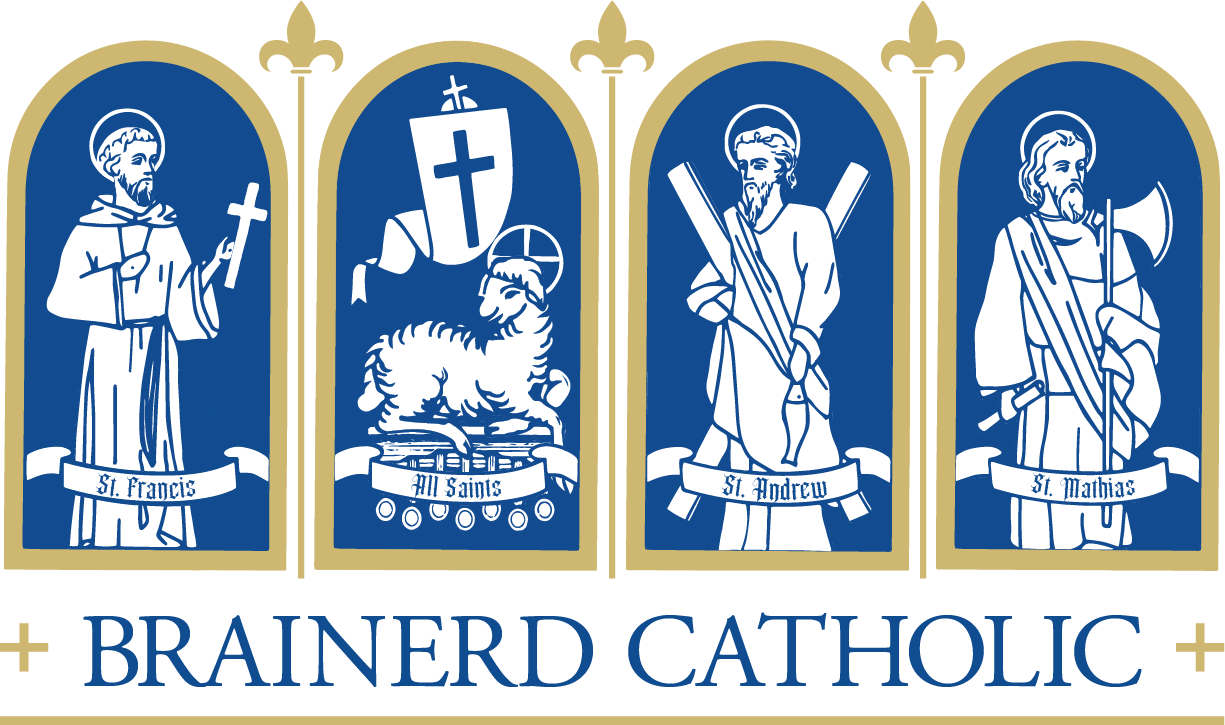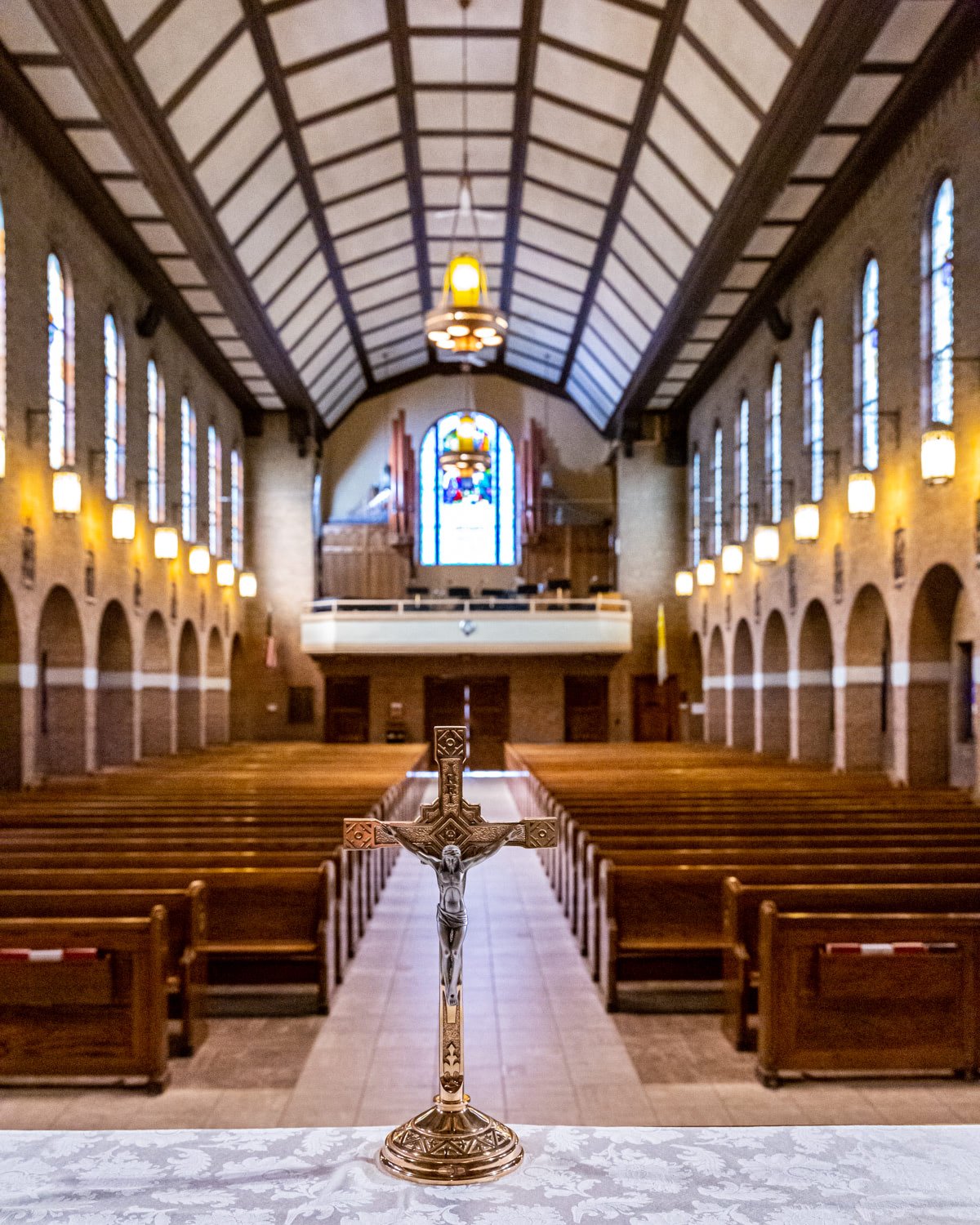Brainerd Catholic
Healing, Hope, and Joy
Jubilee Year 2025
Dear Brothers and Sisters,
The Holy Father has decided that 2025 will be a year of Jubilee, something which happens every 25 years. The 2025 Jubilee will be centered on the theme “Pilgrims of Hope,” which is also one of our diocesan mission values.
As Pope Francis so beautifully expressed it: “We must fan the flame of hope that has been given to us and help everyone to gain new strength and certainty by looking to the future with an open spirit, a trusting heart and far-sighted vision.”
The celebration of the Jubilee year in the Diocese of Duluth will include:
Opening Mass of the 2025 Jubilee - Pope Francis will mark the opening of the Jubilee Year 2025 Pilgrims of Hope when he opens the Holy Door of St. Peter’s Basilica on December 24, 2024. I will be opening the Jubilee year for our diocese at the Cathedral of Our Lady of the Rosary during the Mass on December 29, 2024, at 10:30am.
Msgr. Buh Jubilee Pilgrimage - We will be celebrating the 2025 Jubilee Year as Pilgrims of Hope by designating six locations within our diocese as pilgrimage holy sites to visit and receive Jubilee indulgences. All six locations have a historic connection to Monsignor Joseph Buh, thus affording the opportunity for the faithful to learn more about him and to pray for his intercession. Pilgrimage booklets will be sent to each parish in January for distribution to parishioners (a printable version is available on this page below).
Enshrinement of Msgr. Buh - During the 2025 Jubilee Year, we will celebrate the historic enshrinement of Msgr. Buh in the Cathedral of Our Lady of the Rosary. This will allow Pilgrims of Hope a public veneration of this holy one of God as we initiate his cause for sainthood.
In the Catholic Church, the concept of Jubilee or “Holy Year” is used to declare a special year of forgiveness and reconciliation. As Pilgrims of Hope, we embrace this Jubilee Year as a moment of coming home to the healing, hope and joy we can only find in Jesus.
Advent blessings on you and those you love and serve,
Bishop Daniel J. Felton
Diocese of Duluth
2025 Pilgrimage site
St. Francis Church
Fr. Joseph Buh had arrived in St. Paul in 1864 from Slovenia and was serving and assisting Fr. Francis Pierz in much of the central and northern Minnesota Catholic mission territory. So it makes sense that he came north from Old Crow Wing to the new railroad community in October 1871 to offer the first Mass in what is now the city of Brainerd. Buh found quite a settlement of Catholics here, so in 1872 he built the first church on South Fifth Street, calling it St. Francis of Assisi, the patron saint of peace and brotherly love; it was fittingly named because of the purported peace between the Native American population and immigrant population in the area. He continued to serve the Brainerd mission as pastor until 1880, celebrating many occasions and sacraments throughout those early years of establishment.
“No small credit must be given to Fr. Buh, and to those pioneer missionaries who spread the doctrines of Catholicity in Brainerd under the most adverse conditions embodied in the old wooden church on South Fifth Street.” (The History of St. Francis 1871-1947)
Q & A
-
Inspired by the Jewish calendar in which every seventh year (sabbatical year) was intended to remind men and women that God is the master of the universe; the year of Jubilee, which was the last year of the seventh seven-year period (the 50th year), was established to be a year in which slaves were freed and debts were forgiven.
In AD 1300, Pope Boniface VIII (1294-1303) called the first Jubilee Year of the Christian era. The purpose of the Jubilee, which has been called the Holy Year since AD 1500, was to allow Christians a particular timeframe in which they could focus on their sins and examine their consciences for the special forgiveness of their sins.
2025 will be the 30th Holy Year. Though the regular interval is every twenty-five years, there have been multiple times throughout history in which an extraordinary Holy Year was called, most recently the Holy Year of Mercy called by Pope Francis in 2016. The principal symbol of the Holy Year is the opening of the Holy Doors of the four major basilicas in Rome, opened only during the Jubilee Years. The Christian pilgrimage is also an important part of the Holy Year and Pope Francis has allowed for each diocese throughout the world to establish their own pilgrimage for the special indulgence.
-
A plenary indulgence is the remission of the temporal punishment due to sins whose guilt has already been forgiven, offered by the Church through the merits of Jesus Christ. The faithful Christian can gain these indulgences under certain conditions through the action of the Church, which, as the minister of redemption, dispenses and applies with authority, according to the Catechism of the Catholic Church 1471.
The indulgence (quoting Pope Francis in the Bull of Indiction of the Jubilee, Spes non confundit), is ‘a Jubilee grace’ which ‘allows us to discover how limitless God's mercy is.
-
To obtain these indulgences, remission and forgiveness of all your sins or the application to the souls in Purgatory, the faithful are called to:
go to the sacrament of penance
receive Holy Communion
pray for the intentions of the Pope
AND one of the following:
undertake a pilgrimage to any sacred Jubilee site* (refer to the pilgrimage guide for the Diocese of Duluth sites) and taking part in a moment of prayer, a liturgical celebration or celebrating the sacrament of reconciliation
Devoutly visit any Jubilee site* and take part in Eucharistic adoration or meditation concluding with the Our Father, the Profession of Faith (Creed), and appropriate invocations to Mary
carry out works of charity or mercy more frequently, mainly in the service of those brothers and sisters who are burdened by various needs
visit those ‘who are in need or difficulty (the sick, prisoners, the lonely elderly, the disabled...), ‘in a sense making a pilgrimage to Christ present in them’
put into practice, in a concrete and generous way, the spirit of penance which is, in a sense, the soul of the Jubilee. Examples:
abstain from futile distractions (real but also virtual distractions, for example, the use of the media and/or social networks)
fast
donate a proportionate sum of money to the poor
support works of a religious or social nature
support the quality of life of abandoned children, young people in difficulty, the needy or lonely elderly people, or migrants from various countries
dedicate a reasonable portion of one’s free time to voluntary activities that are of service to the community or to other similar forms of personal commitment
*In the event of serious impediments, the truly repentant faithful unable to participate in the celebrations, pilgrimages or visits will be able to obtain the Jubilee indulgence under the same conditions if they recite in their own home or from wherever they are impeded from travelling, the Our Father, the Profession of Faith in any legitimate form and other prayers compliant with the purposes of the Holy Year, offering up their sufferings or the hardships of their lives
-
The logo shows four stylized figures, representing all of humanity, coming from the four corners of the earth. They embrace each other to indicate the solidarity and fraternity which should unite all peoples. The figure at the front is holding onto the cross. It is not only the sign of the faith which this lead figure embraces, but also of hope, which can never be abandoned, because we are always in need of hope, especially in our moments of greatest need. There are the rough waves under the figures, symbolizing the fact that life’s pilgrimage does not always go smoothly in calm waters. Often the circumstances of daily life and events in the wider world require a greater call to hope. That’s why we should pay special attention to the lower part of the cross which has been elongated and turned into the shape of an anchor which is let down into the waves. The anchor is well known as a symbol of hope. In maritime jargon the ‘anchor of hope’ refers to the reserve anchor used by vessels involved in emergency manoeuvres to stabilise the ship during storms. It is worth noting that the image illustrates the pilgrim’s journey not as an individual undertaking, but rather as something communal, marked by an increasing dynamism leading one ever closer to the cross. The cross in the logo is by no means static, but it is also dynamic. It bends down towards humanity, not leaving human beings alone, but stretching out to them to offer the certainty of its presence and the security of hope. At the bottom of the logo is the motto of the 2025 Jubilee Year: Pilgrims in hope, represented in green letters.












